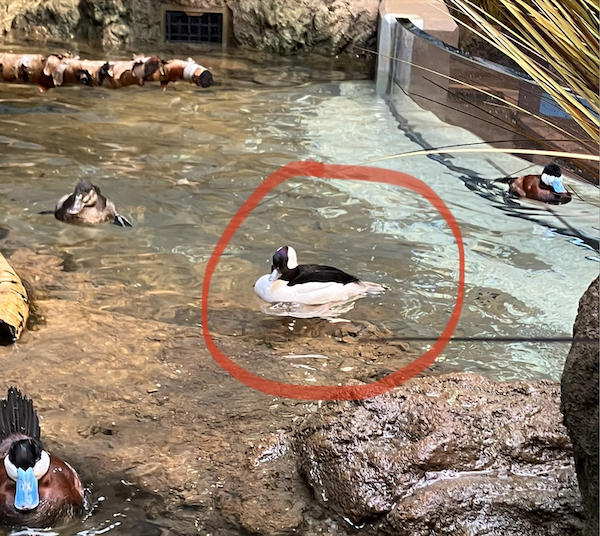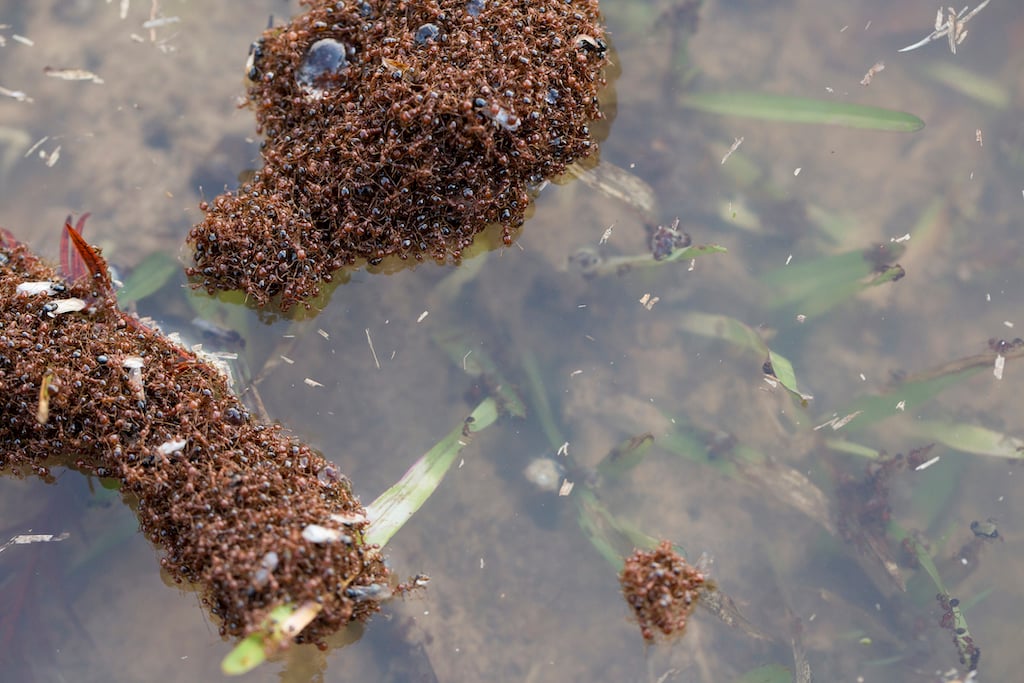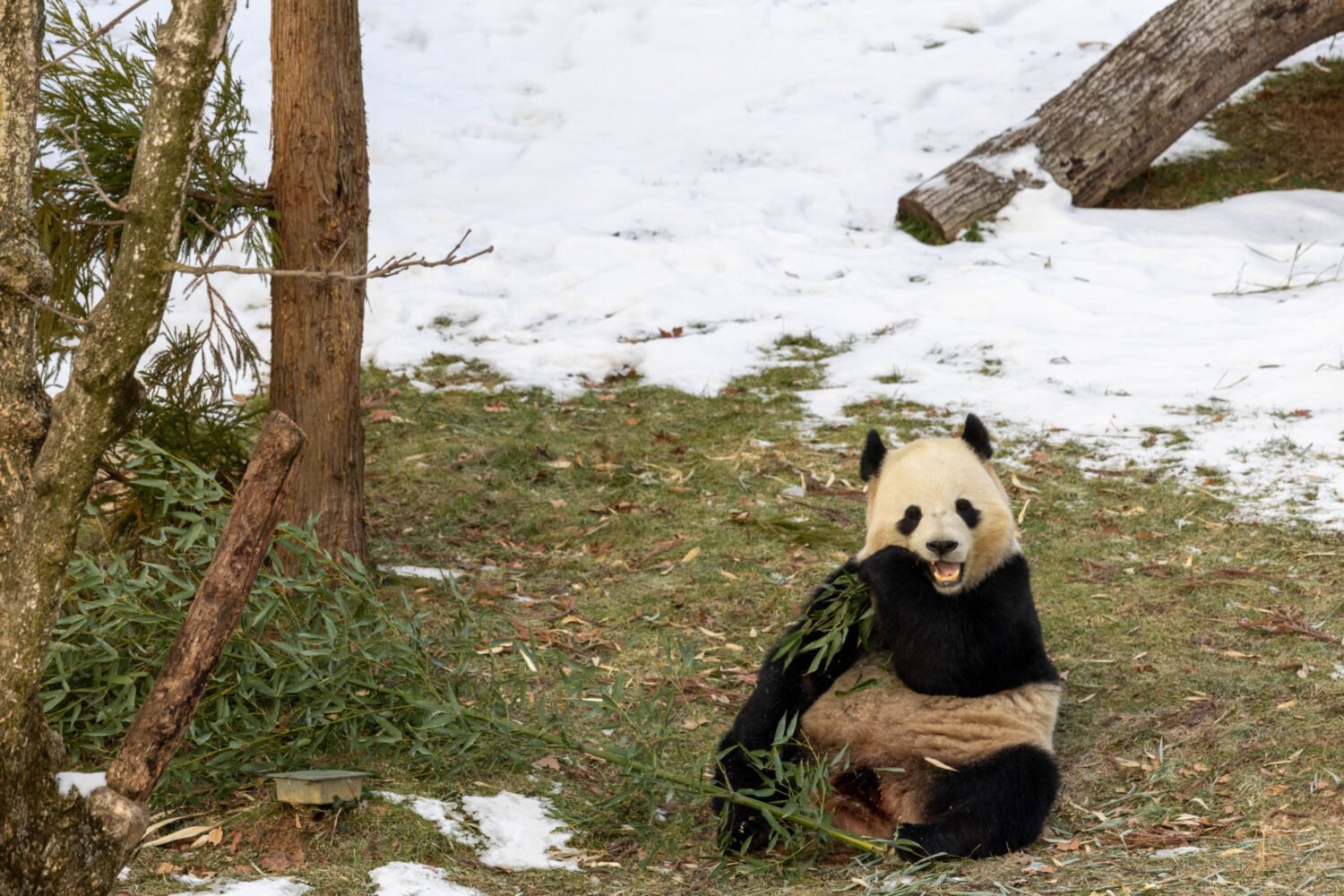If you have even a glancing familiarity with reality dating shows—singles from a variety of locales thrust into a new habitat, given nice digs and free food in exchange for constant surveillance during mating season—then you’ll understand what’s happening with the ducks.
Back in November, a couple dozen waterfowl moved into a sumptuous new aviary at the National Zoo’s Bird House, which—after five years of renovation—is slated to re-open on March 13th. These ducks had two missions: to beguile the zoo’s patrons with their winsome plumage and antics, and to become comfortable enough to breed. I visited on Wednesday to see how that’s going. Here is an excerpt from my notes:
“Veronica flaps back and forth on the water, beating against the surface, flipping her little fins and shaking her butt, which sprays water everywhere. I am all wet, even though I’m standing in the walkway behind a guardrail. She seems to be running on the surface of the water. An absolute nutcase. Some of the rowdiest behavior I’ve ever seen.”
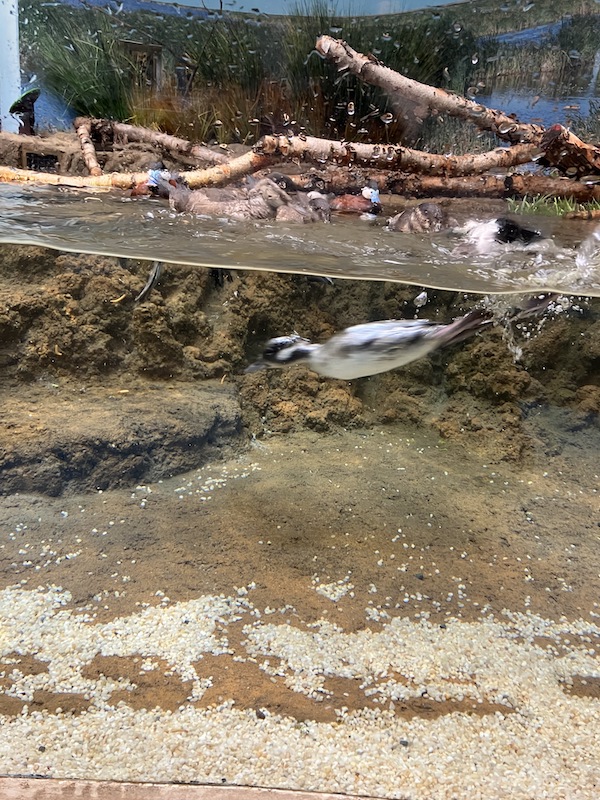
Veronica is a female bufflehead duck. Her body is downy and small—surprising, given the magnitude of the ruckus she’s causing. Apparently, this lunacy is intended to secure the affection of Fabio, a handsome male bufflehead named for the romance-novel model. Duck Fabio has won the hearts of not just Veronica, but also her rival, Betty. In true soap opera fashion, Betty looks almost identical to Veronica, except that her ankle band is a different color and her behavior is significantly less unhinged.
According to the ducks’ keeper, Jen Ferraro, there’s a backstory here, a drama that’s been consuming the aviary for weeks: “So, Betty keeps trying to entice Fabio, but Fabio’s not interested in her—Fabio is very interested in Veronica, but Veronica’s been playing hard to get.” For a while, Veronica kept Fabio on the back burner. When he would try to flirt (apparently by doing an “elaborate head bob” and then throwing his head back to whistle), Veronica would refuse to acknowledge his advances, but she’d also chase Betty off whenever she got too close. Then Fabio’s fortunes shifted. “Yesterday, Veronica started reciprocating his dances and vocalizations,” Ferraro says. “It’s very exciting. We’re hoping they breed.”
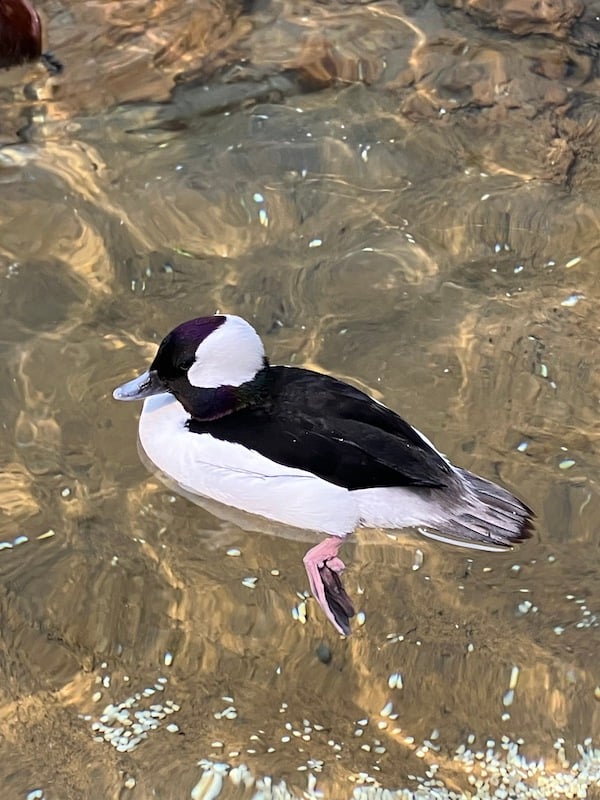
This is all going down in what’s essentially the heart-shaped jacuzzi of the duck world: the “Prairie Pothole” aviary, a re-creation of a midwestern marshland where 80 percent of ducks go to breed. Liberated from predators, the zoo’s lucky ducks can focus squarely on their hedonistic pursuit of mating (which occurs in the aviary’s two water features) and nesting (which occurs in the marsh grasses ringing the ponds). In addition to sex, these rapacious ducks love lettuce. “They’re like piranhas,” Ferraro says. “I feed them a big head of lettuce and it is gone in about five minutes. I have kids—I wish they ate their vegetables like these ducks.”
Right now, the Prairie Pothole is “in full breeding mode,” and the ducks are positively riotous—two seem to be racing each other when I first walk in. The blue-winged teals are doing some kind of convoluted sex dance, and the male ruddy ducks poke their tails into the air to catch the ladies’ eyes. Ferraro points to an unassuming brown duck—a wigeon—which apparently flirts by demonstrating its swimming prowess. “Wigeons will quite literally kick everyone out of the pool,” Ferraro says. “I’ll walk in and see all the ducks around the edge just watching, waiting for them to finish.”
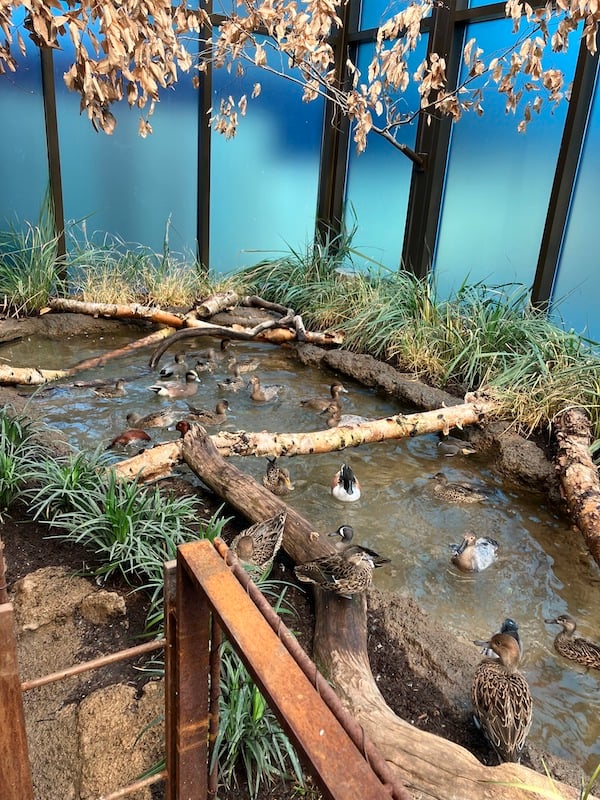
In addition to peak duck histrionics, the zoo has some dove drama brewing. That’s in the next room over—a model of a South American bird-friendly coffee farm—where mating season has only barely begun. This aviary is lush and jungled, full of olive trees, ferns, palms, and knobby shrubs. A loud and persistent cooing rings out, like the tolling of a bell.
“So the hot topic of Coffee Farm right now is Rocky, our blue ground dove,” says Shelby Burns, who presides over this aviary. “He’s the one cooing, and he has taken a real liking to one of our male ruddy quail-doves. He follows him around and he likes to do this little courtship dance to him, but the ruddy quail-dove wants his female that he’s been seeing, so it’s a little awkward at times. It’s a little like—‘Okay, that’s enough, you’ve been following me around like a little baby brother all day.’ ”
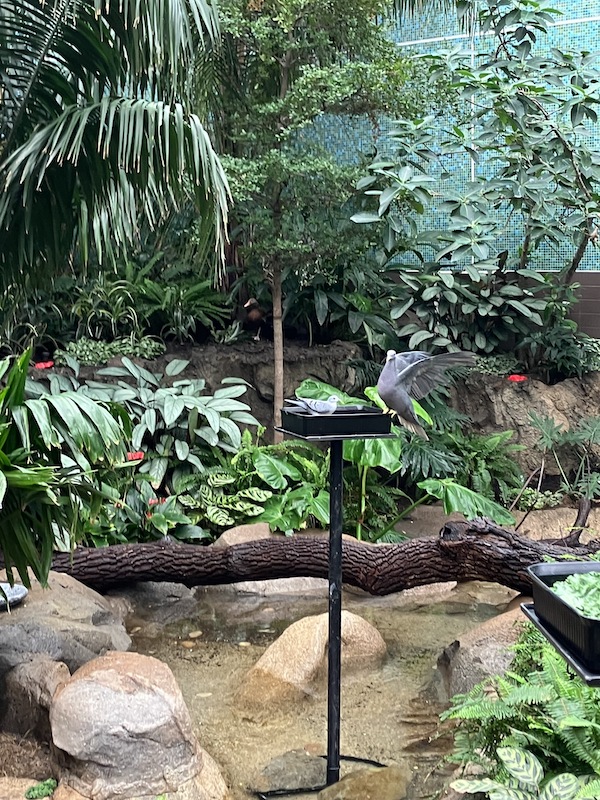
When I ask Burns how the ruddy quail-dove lets Rocky know when he’s had enough, she replies that “it’s funny, because he’ll do this little, like, wing flap.” That’s right—the ruddy quail-dove will literally slap poor Rocky away.
But then the story gets complicated. “He does actually tolerate it sometimes,” Burns concedes of the ruddy quail-dove. Apparently, earlier today, some doves were roosting on the rail by the fig tree when Rocky dropped by. “Rocky likes to sit on the doves,” Burns says, “and he did try some mating, and the dove was…participating.” A pause. “He consented.”
So they had a fling but the ruddy quail-dove still prefers the females? “Yes. Rocky—he’s a little socially awkward. He’s a little much. He just wants to have friends.”
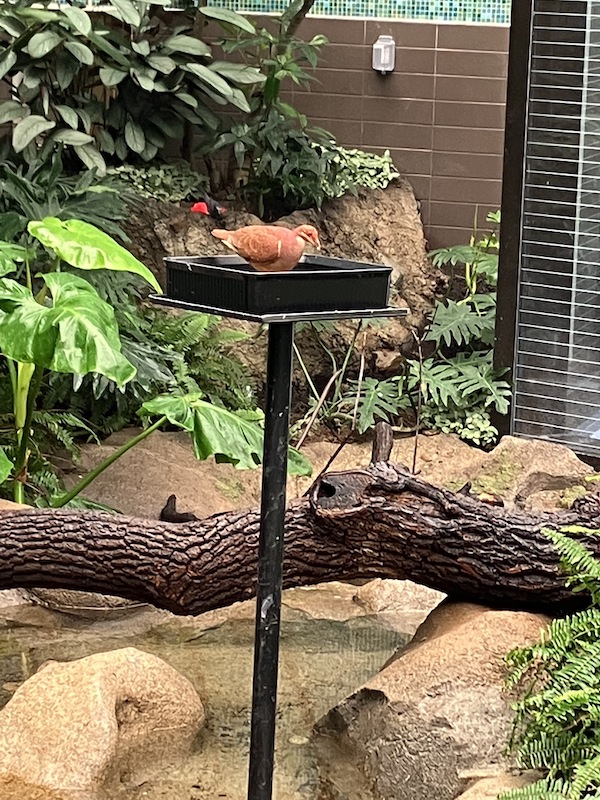
Of the zoo’s three aviaries, the Prairie Pothole was the first to be struck by mating madness, and Coffee Farm will be next: So far, some catbirds have gotten interested in each other, and there’s a pair of Baltimore orioles staking out territory to nest. But the zoo’s staff anticipate more drama “once the hormones really get going.” “This is going to be our first breeding season in here,” Burns says, “so it’ll be interesting to see all these different species and personalities interact with each other.”
Mating season will arrive last at the zoo’s Delaware Bay aviary. “It’s coming up,” says the zoo’s curator of birds, Sara Hallager. The shorebirds “are just starting to molt into their breeding plumage, so it’ll be June or July.” In the wild, shorebirds migrate up from South America, arriving at the Delaware Bay emaciated. Then they spend a few hedonistic months gorging on horseshoe crab eggs—doubling their body weight as they go—while finding mates. They’ll mimic this behavior at the zoo, which means, Hallager says, that “the summer could be quite dramatic in here.”

The zoo’s fixation on mating season is, yes, about the spectacle: “I joke around with my husband that I don’t need to watch dramatic television because I have it here on a day to day basis,” says Ferraro, who’s loving the bufflehead love triangle. But it’s also a big part of her job. On reality shows, it’s a coup when a producer can prod contestants into hooking up—and weirdly, that’s also true at the zoo. “One of the best indicators of how well our birds are doing is that we’re seeing this breeding behavior,” she says. If they weren’t thriving, they wouldn’t be trying to bone.
As we’re watching the ducks, one shoots out of the water and flies across the walkway between the stream and the pond, passing so close to my head that my hair ruffles. “Yeah, Betty’s nearly knocked into me a couple of times,” Ferraro says with a shrug. Betty lands in the pond near Veronica, who is doggedly tailing a chuffed Fabio as he bops around the water. It’s tough to compete with Veronica—she’s diving underwater and swimming earnestly after Fabio, nipping occasionally at his tail feathers. Ignored, Betty retreats to a corner to lick her wounds.
Ferraro hints that another twist may yet come in this bufflehead saga—apparently, Fabio will probably breed with Betty eventually, even if he takes up with Veronica first. Whenever this happens, the staff will know: “I have cameras overnight,” Ferraro admits, “monitoring to see where they’re nesting.” Technically, this is about caring for the chicks—but the Bird House is truly a show.

